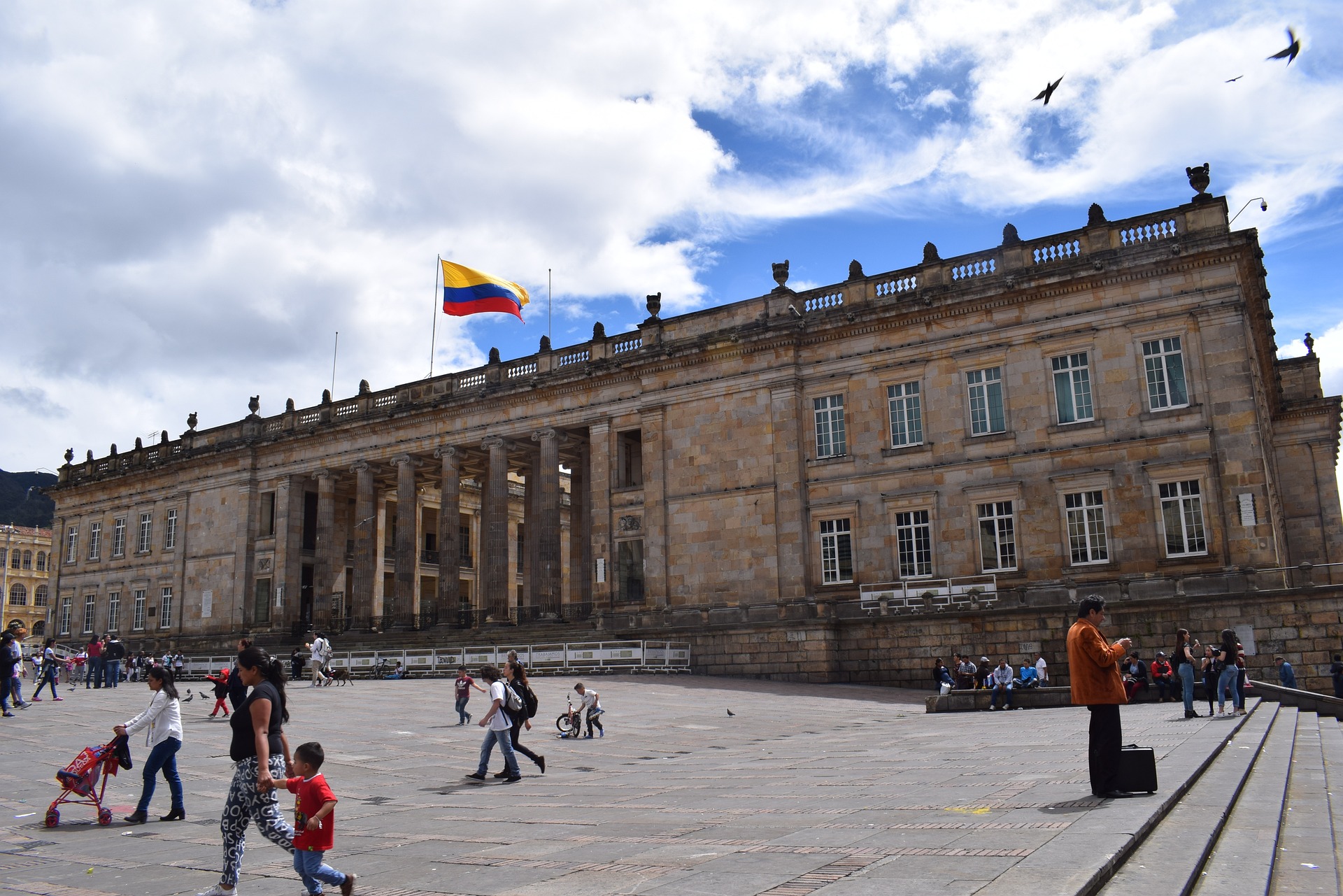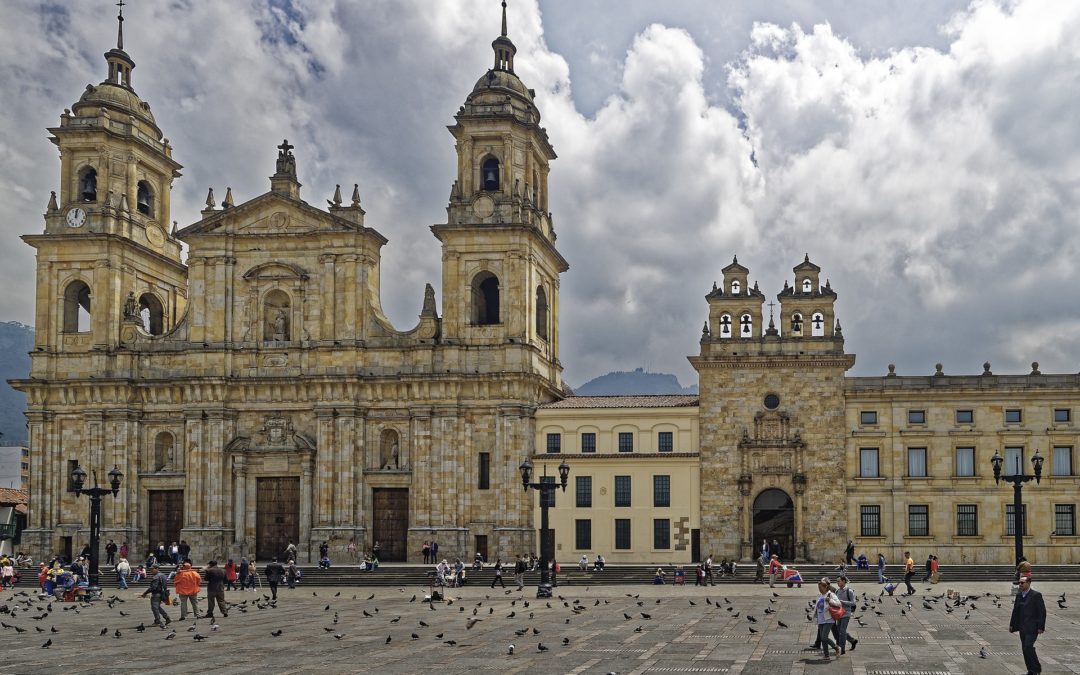In this post I will tell you about my experience in Colombia. This South American country has changed radically in the last 20 years. For years, the history of Colombia has been linked to drug trafficking and insecurity, but, today, it is one of the fashionable destinations and still a great jewel with much to offer.
In this post I will tell you about my trip and my experience in this extraordinary country, as well as some tips for traveling to Colombia.
MADRID – BOGOTA – CARTAGENA DE INDIAS
It all starts at the Madrid-Barajas airport where I boarded my flight to Bogotá. Once in Bogotá, I boarded another flight that left me in Cartagena de Indias, my first destination on this adventure. In Cartagena I spent two nights at the Capilla del Mar and one night at the Las Américas Global Resort.
Cartagena de Indias is a city located on the shores of the Cariba, founded in 1533 by Don Pedro de Heredia, it was, and is, one of the Colombian and Latin American jewels. My day started at 9:00am where I went on a city tour. This tour began with a panoramic tour of the modern area of Bocagrande and Castillogrande, this area is the most built up in the city with its tall modern buildings.

After the visit to the modern area, we went to the Castle of San Felipe de Barajas to admire the views over the city. This incredible fortress was founded in 1657 by the Spanish and is the largest military complex of all those built on the American continent by the Spanish. The main objective of the fort was to provide security, but also a good view of the sea and the city of Cartagena, which is why it is an essential place to have a panoramic view of the place.

The next destination of the tour was the Getsemaní neighborhood. This neighborhood falls in love, it is a neighborhood full of modern art, graffiti, music and life and colors that are contagious. I personally loved it, you could enjoy Colombian culture and traditions in an incredible way. If you visit Cartagena, it is an essential place.
The next stop was for lunch in the city center. We ate at the Vedana restaurant where we visited the beautiful Ananda Boutique hotel located in the historic center.
The historical scepter is simply spectacular. Cartagena is a living example of colonial construction and literally every place was worthy of being portrayed on a postcard. The bright colors that its architecture presents in tune with the Caribbean make the city unique, you will fall in love with it. To finish the tour we will walk through the bay of Cartagena to enjoy the warm Caribbean nights and the contrast between the lights of the old walled city and the modern residential buildings.
To end the day, we ate dinner at the Marea Restaurant. This beautiful restaurant has an open area towards the bay that managed to make us enjoy ceviche and Colombian gastronomy in a special way.
CARTAGENA DE INDIAS
The second day started early, at 7:45 it was breakfast to go on the day's adventure on the way to the small archipelago of Islas Coralinas.
The journey to the archipelago was made in a small motor boat with which we crossed an area of mangroves. The route was interesting if the objective is to appreciate the mangroves, the problem is that you get a little wet if the sea is a little cloudy or if the weather isn't the best.
Once we arrived at Isla Grande, we enjoyed a visit to the San Pedro de Majagua hotel, a resting place surrounded by extensive vegetation and bathed by the beautiful Caribbean Sea. There we enjoy the typical gastronomy consisting of coconut rice, fish, salad and patacones.
Finished, we returned to Cartagena to stay at the Las Américas Global Resort and have dinner at the Candé restaurant, considered one of the best in Colombia. The restaurant has a beautiful decoration and setting and food to match.

CARTAGENA DE INDIAS – MEDELLIN
After breakfast at the hotel I went on a two-hour canoe tour. The tour took us through the mangrove tunnels near Cartagena and ended with a show where the natives taught us their folk dances such as Cumbia or Mapalé. It was a very interesting and enriching experience, it is a way to delve into Colombian culture in a different way.
After the tour, my trip in Cartagena de Indias ended, I took a flight and went to Medellín and the transfer that would take me to my accommodation, the Intercontinental Medellín Hotel. One aspect that fascinated me was the entrance to the city. Being in a valley full of vegetation, the Aburrá Valley, gives the impression that you are entering a forest with buildings.
The day did not go well, I went to the hotel, had dinner at the Hotel Estelar and went to rest with the objective set on the day that awaited me.
MEDELLIN
I invested this day in a tour of the city and its most iconic places. This tour began with a quick visit to commune Nº14, also called El Poblado. So that the concept of "communes" is understood, I will explain a little how they work. The urban area of Medellín is divided into 16 communes, these communes really lack any value as territory, they are used to divide and geographically locate the different sections of the city. In the case of commune No. 14, it is the most exclusive in the city. Interesting places in the commune are the Explora and Pies Descalzos parks with their interesting and artistic modern architecture, which if one has time to visit, is very interesting and curious.
Finished the visit to the Town, I went to the Parque de la Inflexión. This park honors all the victims of the violence caused by Pablo Escobar Gaviria and is located in the place where he had his house. The park is a black stone wall space approximately seventy meters long and five meters high. In the northern part of the wall there are 46.612 perforations in honor of the direct or indirect victims of Pablo Escobar. During the night these perforations are illuminated creating a constellation in the black stone. In the southern zone, there is a chronology carved with 208 violent events that occurred in Medellín. It is a place that no one should miss when visiting the city, it is impressive and emotional.
After the visit to the park, they explained to me the importance of the cable cars in the development of the most marginal neighborhoods. We ventured on a cable car tour and we got into commune No. 13, without a doubt, a must-see. This commune has resurfaced in recent years through culture and urban art. It is a neighborhood with many graffiti and colorful artistic expressions in every corner. Among the graffiti, I would highlight the so-called “Operation Orion”. This fabulous tribute refers to the sad incident of October 16, 2002 where the military and the government entered the commune by force to put an end to the urban militias. The operation achieved its goal, but it took the lives of civilians. The symbology is clear, it refers to the military and the government playing with the dice of commune 13 and how it reemerges as a new woman with hope for the future.



After having fun in Comuna 13, because yes, Colombians know how to have a good time, we went to have lunch.
The next stop was the Plaza de las Esculturas. This square has 23 monumental sculptures by the master Botero, a famous Colombian painter and sculptor. The story arises because the city council asked Botero to buy a sculpture and the famous sculptor decided to donate 23 sculptures to his hometown. This gives the visitor the opportunity to see the peculiar artistic expressions of Botero. For a person who loves culture, this was amazing!
For dinner we headed to El Herbario. There, enjoy an incredible Colombian gastronomy experience, as well as a tasting of good Colombian coffee. Dinner was accompanied by a show, a highly recommended place, yes, I do not advise a coffee tasting at 18:30 p.m., then there is no one who sleeps...
BOGOTA – MADRID
The next day I returned to Bogotá to spend the last days working. I couldn't enjoy Bogotá much, but I tried to make a getaway to see the Gold Museum. The museum's objective is to preserve and investigate goldsmith collections found in the country. I recommend every cultural traveler to visit this museum and admire the amazing collection. I also made time for a self-guided walk through the historic center of the city and admire buildings such as its beautiful cathedral and the government building.
After 3 busy nights in Bogotá, I caught my flight back to Madrid. I hope this story is useful to you and encourage you to travel!

Tips on traveling to Colombia
- Never buy local products at the airport because it is 5 times more expensive than in a market.
- Colombia is a country that has improved a lot, but it always helps to have a travel agency help you plan your trip.
- Get involved with the local population, you can learn interesting things.
- Cash is important.
- Transportation in places like Medellin is easy and takes you almost anywhere.
- Enjoy, that's the most important thing of all.

